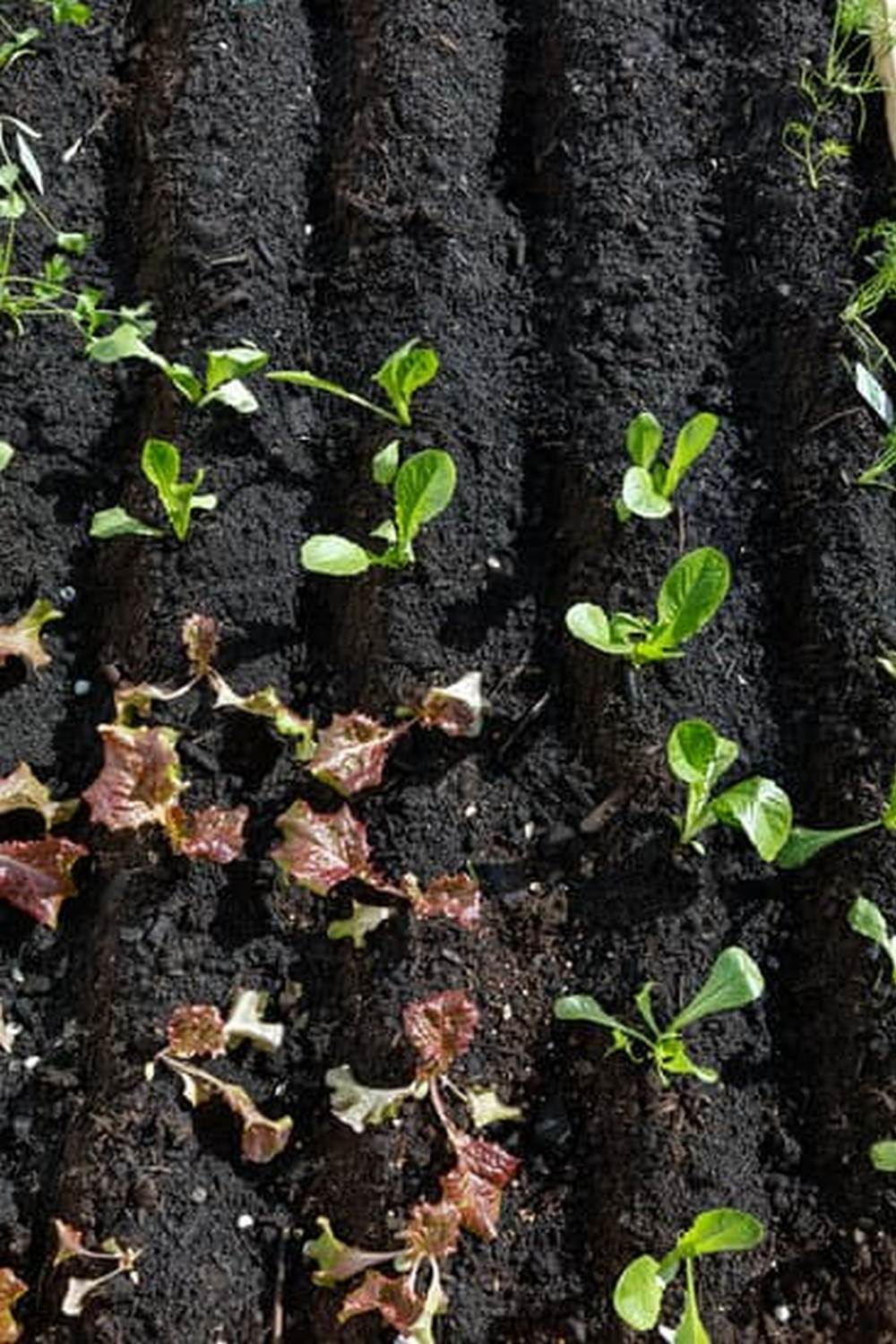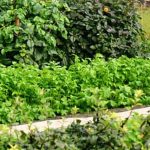Vegetable gardening in small yards may seem like a challenge, but with the right ideas and strategies, it is definitely achievable. In this article, we will explore various vegetable gardening ideas for small yards that can help you make the most of your limited space. From assessing your space to choosing the right vegetables and incorporating creative design elements, we will guide you through the process of creating a thriving vegetable garden in a small yard.
Small yards present a unique opportunity for urban and suburban dwellers to reconnect with nature, grow their own food, and enjoy the benefits of fresh produce right at home. With proper planning and techniques such as vertical gardening and container gardening, even the smallest outdoor spaces can be transformed into flourishing vegetable gardens. Whether you are a beginner or an experienced gardener, there are endless possibilities to explore when it comes to cultivating vegetables in limited areas.
In addition to providing an abundant supply of fresh fruits and vegetables, gardening in small yards offers numerous benefits such as improved air quality, stress relief, and the satisfaction of knowing exactly where your food comes from. By following the tips and ideas outlined in this article, you can create a beautiful and productive vegetable garden that not only enhances your outdoor space but also nourishes both body and soul.
Let’s dive into the world of vegetable gardening in small yards and discover how you can turn your compact outdoor space into a green oasis of fresh flavors.
Assessing Your Space
When it comes to vegetable gardening ideas for small yards, one of the first steps is assessing your space to determine the best layout for your garden. Small yards present unique challenges but also offer creative opportunities to maximize every inch of available space. Consider factors such as sunlight exposure, soil quality, and existing structures like fences or walls that can be utilized for vertical gardening.
One effective strategy for small yard vegetable gardening is to utilize raised beds or containers. Raised beds not only provide better drainage and soil quality but also allow you to control the size and placement of your garden. Containers, such as pots or hanging baskets, are versatile options that can be placed strategically throughout your yard to make the most of limited space. Additionally, they add visual interest and can be moved around as needed.
Another important aspect of assessing your space for a small yard vegetable garden is considering potential obstacles like shade from buildings or trees. Take note of where the sun hits at different times of the day to ensure your plants receive adequate sunlight. By carefully planning and organizing your garden layout based on these considerations, you can create a thriving vegetable garden in even the smallest of yards.
| Aspect | Action |
|---|---|
| Sunlight Exposure | Observe sun patterns throughout the day for optimal plant placement |
| Obstacles | Identify shade sources that may impact plant growth and adjust accordingly |
| Space Utilization | Maximize space with raised beds, containers, and vertical gardening techniques |
Vertical Gardening
When it comes to vegetable gardening ideas for small yards, vertical gardening is a game-changer. By utilizing trellises, arbors, and vertical planters, gardeners can make the most of their limited space while still enjoying a bountiful harvest. One of the advantages of vertical gardening is that it allows plants to grow upwards instead of outwards, saving valuable ground space for other purposes.
Here are some popular vegetables that thrive in vertical gardens:
- Tomatoes: Perfect for growing in hanging baskets or trained up a sturdy trellis
- Cucumbers: Ideal for climbing up a support system like a trellis or cage
- Beans: Bush beans can be grown in hanging baskets or vertically along a trellis
In addition to saving space, vertical gardening also helps improve air circulation around plants, reducing the risk of disease. It makes harvesting easier and more efficient, as the fruits and vegetables are at eye level rather than hidden among sprawling vines on the ground. To get started with vertical gardening in your small yard, consider installing trellises along fences or walls, using hanging baskets from porch ceilings, or creating a DIY vertical planter with repurposed materials.
Container Gardening
When embarking on vegetable gardening ideas for small yards through container gardening, it’s essential to choose the right size containers based on the vegetables you wish to grow. Smaller containers work well for herbs and lettuces, while larger pots are suitable for tomatoes, peppers, or eggplants. Raised beds can accommodate a variety of vegetables but require proper soil preparation and regular watering due to their increased drainage.
In addition to selecting the appropriate containers for your small yard vegetable garden, consider the placement of these containers for optimal sunlight. Most vegetables require at least 6-8 hours of direct sunlight daily for proper growth and development. By strategically placing pots, raised beds, and hanging baskets in sunny spots around your yard, you can ensure that your plants receive adequate light to thrive and produce bountiful harvests.
| Vegetables | Container Size |
|---|---|
| Herbs/Lettuces | Small pots |
| Tomatoes/Peppers/Eggplants | Larger pots |
Choosing the Right Vegetables
When it comes to vegetable gardening in small yards, choosing the right vegetables is crucial to maximize your space and yield. Opting for compact, high-yield varieties can make a significant difference in the success of your small yard garden. Some excellent options for small spaces include cherry tomatoes, bush beans, baby carrots, and microgreens. These crops can thrive in containers or raised beds, making them perfect for limited space.
Another essential factor to consider when selecting vegetables for your small yard garden is the growth habit of the plants. Look for determinate varieties of tomatoes and peppers that stay more compact and produce fruits at once, ideal for smaller gardens. Additionally, choose vegetables that offer a continuous harvest throughout the season, such as zucchini and cucumbers that keep producing as long as you keep harvesting.
Herbs are also fantastic additions to a small yard vegetable garden. Herbs like basil, parsley, mint, and chives can be grown in pots or hanging baskets and provide fresh flavors to enhance your dishes.
They are usually compact plants that are easy to grow and maintain in limited spaces. By carefully selecting compact, high-yield vegetable varieties and incorporating herbs into your gardening plans, you can create a bountiful harvest in even the smallest of yards or balconies utilizing these vegetable gardening ideas for small yards.
Companion Planting
Another effective combination for companion planting in small yards is planting marigolds alongside vegetables like cucumbers or squash. Marigolds are known to deter pests such as nematodes and aphids, helping to protect your crops naturally. Additionally, planting mint near cabbage plants can help deter cabbage moths and other common pests that may threaten your brassica crops.
In addition to pest control benefits, companion planting can also enhance the growth and flavor of your vegetables. For example, planting beans alongside corn can provide mutual support for both crops – the beans fix nitrogen in the soil, benefiting the corn plants, while the corn stalks provide a natural trellis for the beans to climb.
This symbiotic relationship not only improves soil health but also increases the overall yield of your small yard vegetable garden. By incorporating these companion planting techniques into your vegetable gardening ideas for small yards, you can create a thriving and productive garden space that makes the most of limited square footage.
Watering and Maintenance
Choosing the Right Watering System
In a small yard vegetable garden, choosing the right watering system is crucial to ensure that your plants receive adequate moisture. Installing a drip irrigation system can be an efficient way to water your plants while conserving water. Drip irrigation delivers water directly to the roots of plants, reducing evaporation and water waste. This method also helps prevent diseases that can occur from overhead watering.
Monitoring Soil Moisture Levels
To maintain a healthy vegetable garden in a small yard, it’s essential to monitor soil moisture levels regularly. Invest in a soil moisture meter to accurately determine when your plants need watering. Properly hydrated soil will ensure that your vegetables thrive and produce bountiful harvests. Additionally, mulching around your plants can help retain moisture in the soil, reducing the need for frequent watering.
Schedule Regular Maintenance Tasks
Incorporating regular maintenance tasks into your gardening routine will help keep your vegetable garden in optimal condition. Tasks such as weeding, pruning, and checking for pests and diseases should be done consistently to promote plant health and production. Taking the time to inspect your plants regularly will allow you to address any issues promptly before they escalate. By implementing a schedule for these maintenance tasks, you can efficiently care for your vegetable garden without feeling overwhelmed by the upkeep.
Creative Design Ideas
When it comes to vegetable gardening in small yards, creative design ideas play a crucial role in maximizing both the functionality and aesthetics of your space. While the main focus may be on growing a bountiful harvest, incorporating visually appealing elements can enhance the overall ambiance of your garden. These design ideas can also help make the most out of limited space while creating an inviting outdoor area for relaxation and enjoyment.
Utilize Vertical Space
One creative design idea for small yard vegetable gardening is utilizing vertical space effectively. By installing trellises or vertical planters, you can grow vine crops like tomatoes, cucumbers, and peas upwards rather than spreading out horizontally. This not only saves ground space but also creates a visually interesting element in your garden. Vertical gardening can also add height and dimension to your garden, making it feel more expansive despite the limitations of a small yard.
Incorporate Colorful Containers
Another design idea for small yard vegetable gardens is to incorporate colorful containers into your space. Opt for vibrant pots, raised beds, or hanging baskets to add pops of color and visual interest to your garden. Additionally, using containers allows you to move plants around easily and optimize sunlight exposure throughout the day. Mix and match different sizes, shapes, and colors of containers to create a dynamic and attractive display in your small yard vegetable garden.
Create Defined Pathways
To add structure and organization to your small yard vegetable garden, consider creating defined pathways within the space. Use materials like gravel, stepping stones, or wood chips to delineate walking paths between planting beds.
Not only do pathways contribute to the overall design aesthetic of the garden, but they also prevent trampling of plants while providing easy access for maintenance tasks such as watering, weeding, and harvesting. By strategically placing pathways throughout your garden, you can create a sense of order and symmetry in even the smallest of yards dedicated to vegetable gardening ideas.
Harvesting and Enjoying the Fruits of Your Labor
In conclusion, vegetable gardening in small yards offers numerous benefits beyond just providing fresh produce. It fosters a sense of self-sufficiency, promotes healthy eating habits, and can even serve as a therapeutic activity. By utilizing creative solutions like vertical gardening and container gardening, individuals with limited space can enjoy the rewards of growing their own vegetables.
When it comes to preserving and cooking homegrown vegetables from your small yard garden, there are various methods to make the most of your harvest. Canning, pickling, and freezing are great ways to extend the shelf life of your produce and enjoy them throughout the year. Additionally, learning new recipes and cooking techniques can help you fully appreciate the flavors of your homegrown vegetables.
Whether you’re a seasoned gardener or just starting out with vegetable gardening ideas for small yards, remember that success is not measured solely by the quantity of your harvest but by the joy and satisfaction that cultivating your own food brings. With careful planning, efficient maintenance, and a little creativity, a small yard can become a flourishing vegetable garden that enriches both your plate and your soul.
Frequently Asked Questions
How Do You Make a Vegetable Garden in a Small Space?
Creating a vegetable garden in a small space requires thoughtful planning and maximizing the area available. Utilizing vertical gardening techniques, such as trellises or hanging planters, can help optimize space. Choosing compact or dwarf varieties of vegetables can also be beneficial in a small garden.
What Veggies Grow in a Small Garden?
In a small garden, it is important to select vegetables that are well-suited for limited spaces. Some veggies that grow well in small gardens include cherry tomatoes, lettuce, radishes, green beans, peppers, and herbs like basil and oregano. These varieties are typically more compact and can thrive in containers or raised beds.
What Is the Easiest Vegetable Garden for Beginners?
For beginners looking to start their first vegetable garden, some easy-to-grow options include lettuce, radishes, green beans, and cherry tomatoes. These vegetables have relatively simple care requirements and can be forgiving of minor mistakes made by novice gardeners. Starting with these plants can help build confidence and success in gardening endeavors.

If you’re looking to get into vegetable gardening, or are just looking for some tips on how to make your current garden better, then you’ve come to the right place! My name is Ethel and I have been gardening for years. In this blog, I’m going to share with you some of my best tips on how to create a successful vegetable garden.





